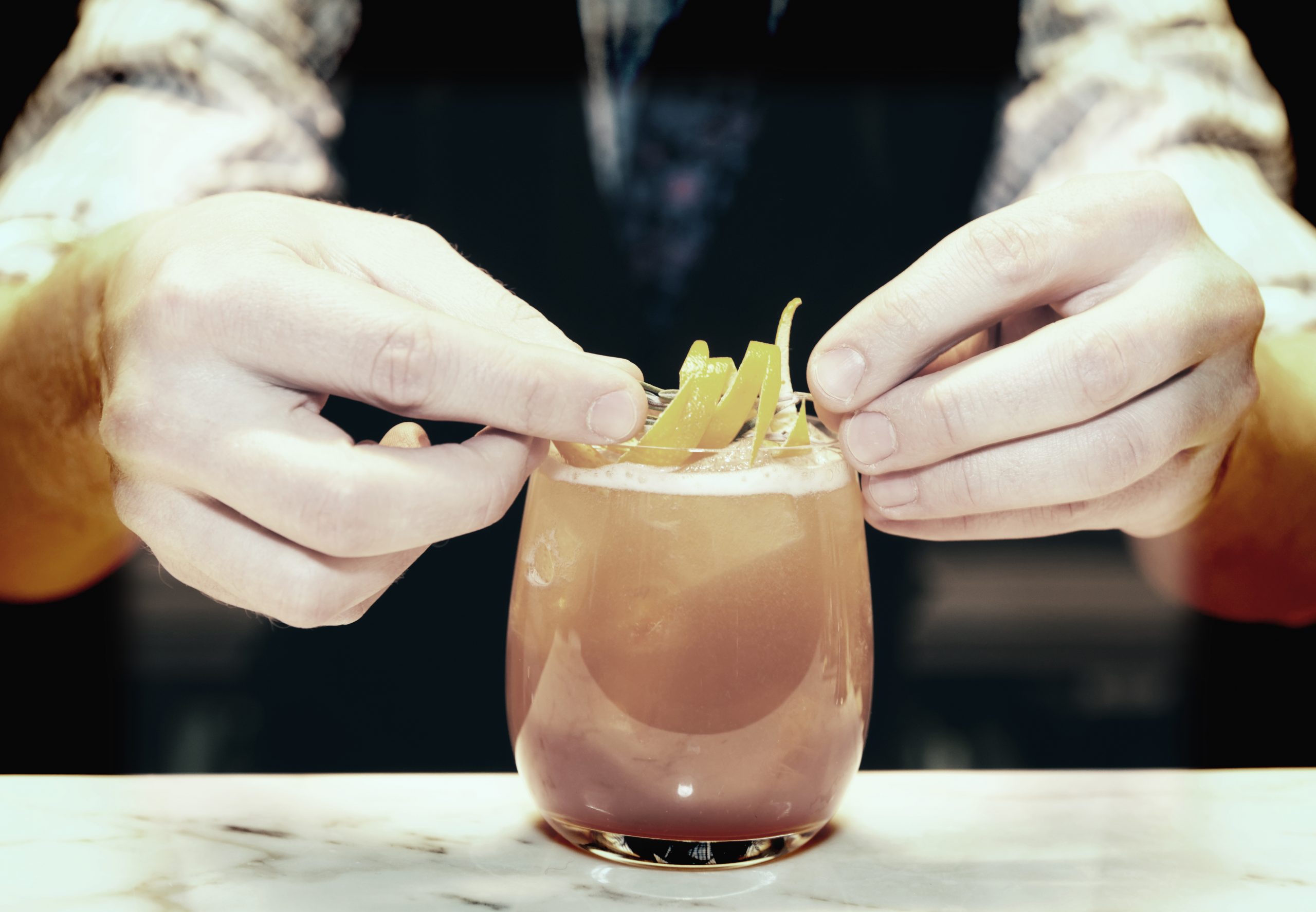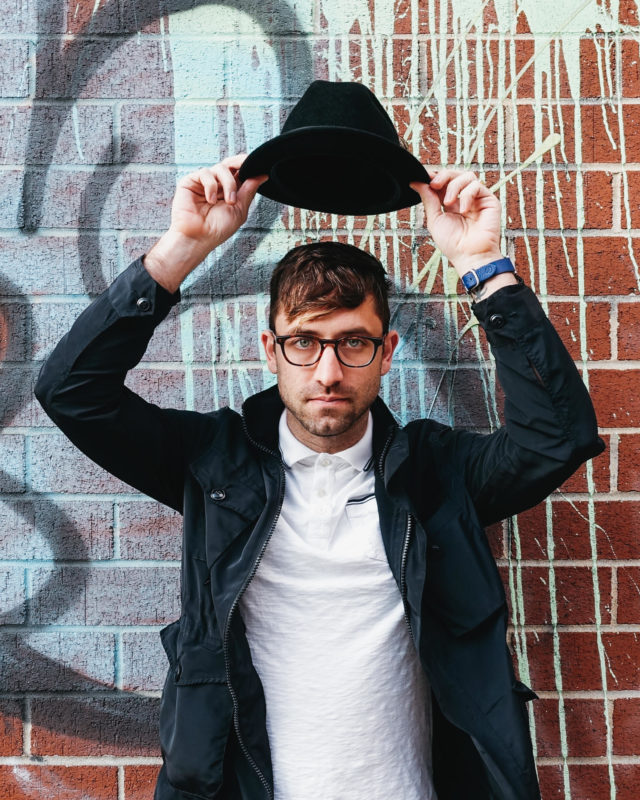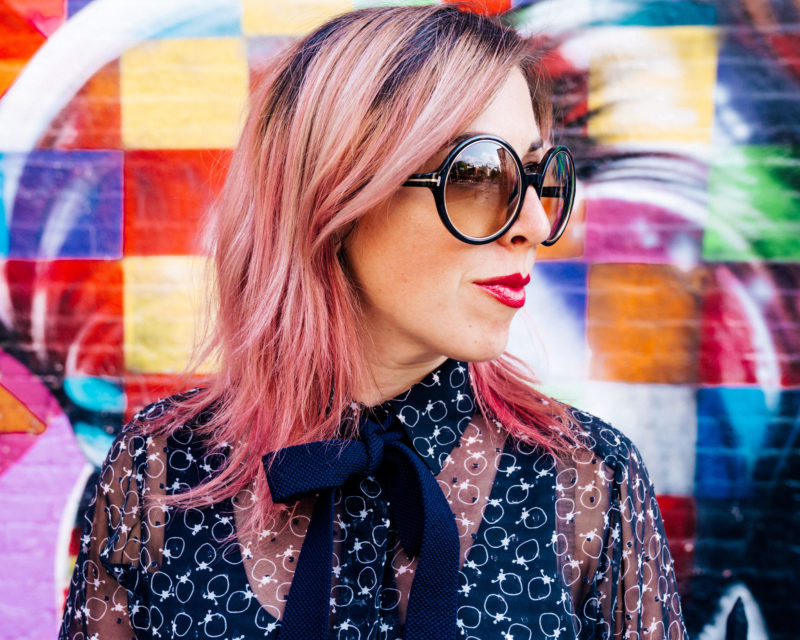


For bars and restaurants, using Instagram as an effective brand-building tool isn’t as simple as posting a picture of a pretty cocktail and encouraging followers to “smash that like button.” In truth, any one picture itself should play but a small role in a business’ broader social media campaign to tell its own story and connect directly with both pre-existing and potential new customers.
But leveraging the photo-sharing platform successfully can be a challenge, particularly for publicans that don’t have a grasp of the fundamentals of either photography or social media. This is okay too, because you don’t need to be Mark Zuckerberg or Ansel Adams to navigate this stuff. You need only to heed some advice from experienced users. And there are few people more qualified on the subject of Instagram, especially as it relates to framing alcohol and the life around it, than Kyle and Rachel Ford, the high school sweethearts turned husband and wife business team behind Ford Media Lab.
In fact, the Fords offer a fairly unique perspective on all this because of their professional experience relating to all sides of the equation here. They’ve worked behind the bar as bartenders in San Francisco and New York; they’ve worked as brand ambassadors for prominent liquor companies Rémy Cointreau and Tanqueray Gin; and now, as business owners themselves, a major part of what they do is take expertly composed cocktail photos for liquor companies. But don’t take it from us. Between them – @kyle4d and @rachel4d – they boast nearly 50,000 followers and have been recognized as having one of the must-follow cocktail accounts by Saveur Magazine. So BevSpot caught up with them to learn more about what it really means for bars to do it for the ‘gram.
The following has been lightly edited for clarity.
People only know what you tell them, right? Social media is a free way to promote yourself, and I think telling that visual story, that’s part of the experience. You’re helping people who maybe haven’t been there yet, bringing to light what it’s like to come and stop by your bar. I think some bars do great jobs of that, simulating what it’s like, and the feeling of sitting at that bar. How do they successfully do that, tell that story and simulate that experience?
It’s not just photographing the drink itself, but photographing the drinks in context. So it’s taking the picture of the cocktail in a setting inside the bar where someone feels like they can just step right into it. I think with so much focus on just products and bottle shots and just a picture of a cocktail, there’s really something to be said for creating more of a lifestyle, drawing someone into the feeling of wanting to be in your establishment visually. I think that’s something that Instagram has the power to create when done effectively.
Definitely. I think something that we tackle both on our personal Instagrams and when we work with brands is addressing the entire picture of what the person they’re trying to address would be interested in. There are bars that are really good that have a really great grasp of kind of a 360-degree focus: “What does the person that visits your bar like to do outside of your bar? What do they like to wear? What are they interested in reading? What magazines do they think are cool?” You know?
So it’s not necessarily veering from the bar’s message by posting things that are way outside the box, but they have the ability to become a tastemaker for the types of person they want to attract by showing them what else is cool, what else is on their brand. People want to be in a place where they identify with what’s going on there. If you show them, hey, we’re just like you, these are the things we believe in and represent, it adds that element of “I’m gonna choose that bar over the one on the corner because I feel like they get me.”
Diversity is great because if it’s just a bunch of cocktail shots, I think it’s redundant. Certainly in the Instagram world there’s merit to having very consistent feeds. But I find the most interesting accounts I tend to follow mix it up, keep you on your toes. They consistently bring a certain story, but it’s not always the same thing.
The nature of being in a bar, there’s a whole host of problems from a photographic standpoint. You’re usually dealing with very dark light, very poor light. Cocktails probably photograph best if you have a nice beautiful light streaming in through a window at midday. But the reality is that’s not usually when most people are drinking.

Knowing just the situation and how to take a better photo. You don’t need a degree in photography. But maybe just look around. My best thing, I try to stick to accounts that inspire me, and start mimicking things I like and incorporating them in my own photos. Follow any accounts you can that already do a great job.
From the standpoint of building out the bar, decorating the bar – there are bars in New York City and I can think of others elsewhere – you can tell they’ve chosen portions of their décor specifically for the Instagram-ability. Mother of Pearl in the East Village, for instance, had a cocktail in a tiki mug that was a shark’s open mouth and they dashed angostura bitters on top to make it look like blood was coming out of the shark’s mouth. It’s all over Instagram if you go to photos of their bar. It’s a highly Instagram-able thing.
It’s a great cocktail too. But they were thinking outside of the box and creating something that’s interactive with the guests so people would definitely show up like, “Hey, I want that shark drink.”
Absolutely. People want to go where the cool kids are going. We follow a lot of people that are doing things that we’re interested in, and when we see that they’ve discovered a cool spot or destination, or they’re at a place we want to go to, that does influence our decisions as well. If a bar is telling you it’s cool, that’s great. But if another person that you align with is telling you it’s cool, that’s when you’re really going to go there.

We judge an Instagram account by its grid.
I always tell people to mind their grid. When you click on an actual page, is there a consistent story being told there? Because that’s what it is, you’re giving people a look into your business, or your life, and I think the most successful accounts consistently have that down to a T. That’s the one thing they all have in common, despite their differences in theme and photography. They’re telling a consistent story.
Which usually carries over into their products as well. If they have amazing attention to detail in their social channels that typically translates to the experience you’re going to have.
For bars and restaurants, just make sure you’re taking your photos in good light. Even iPhones now have aperture control – just explore the tools you have in your own pocket. It’s amazing how powerful these cameras are that people are waking around with but no one really knows how to use them. Smartphones are capable of doing a lot. We use professional cameras ourselves, but we certainly didn’t start there.
I would also encourage maybe looking into editing your photos maybe slightly more than Instagram allows you to. I’d use VSCO – their filters are a little bit more robust. There’s also Lightroom mobile. Lightroom is a heavy photography tool for professional photographers, but the mobile app is really nice.
On top of that, it’s Instagram basics. Make sure you’re geo-tagged so people can geo-tag your bars. Put it on your page’s menu. Maybe invent your own hashtag as well, something obvious. If your name is XYZ Bar then start hash-tagging your photos #XYZBar, and encourage other people to do so. Then, when you’re bored or have some down time, your account should go to the hashtag and geo-tag and start liking and interacting with anything that has to do with your business.
Instagram is social and it’s a very reciprocal platform. People feel good when they see they’ve been added, or they’ve been liked, or someone is following them. I think if a bar is going and liking people in their target market, certain individuals might think, “Oh wow, this bar in my neighborhood just started following me, I want go in and see what they’re all about.”
Schedule 15mins to chat with a product specialist
Start a FREE Trial Today! BevSpot offers full product education and account setup for all customers! No card Information needed!
